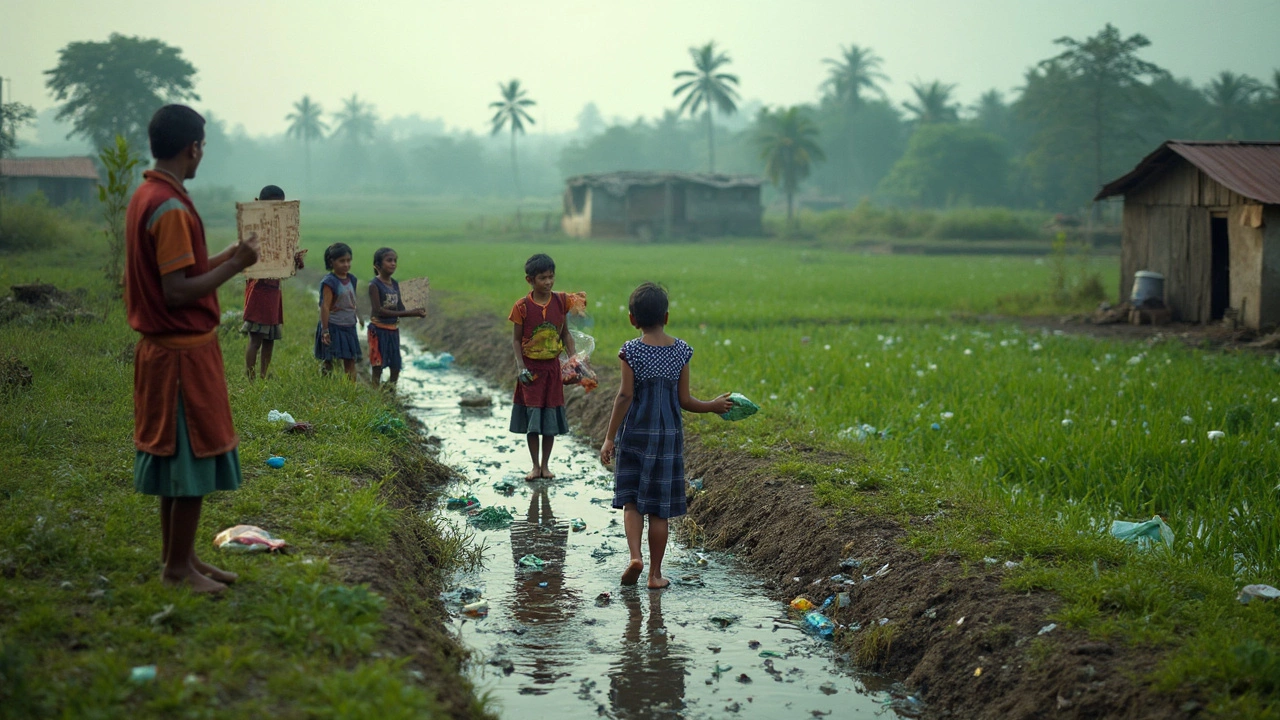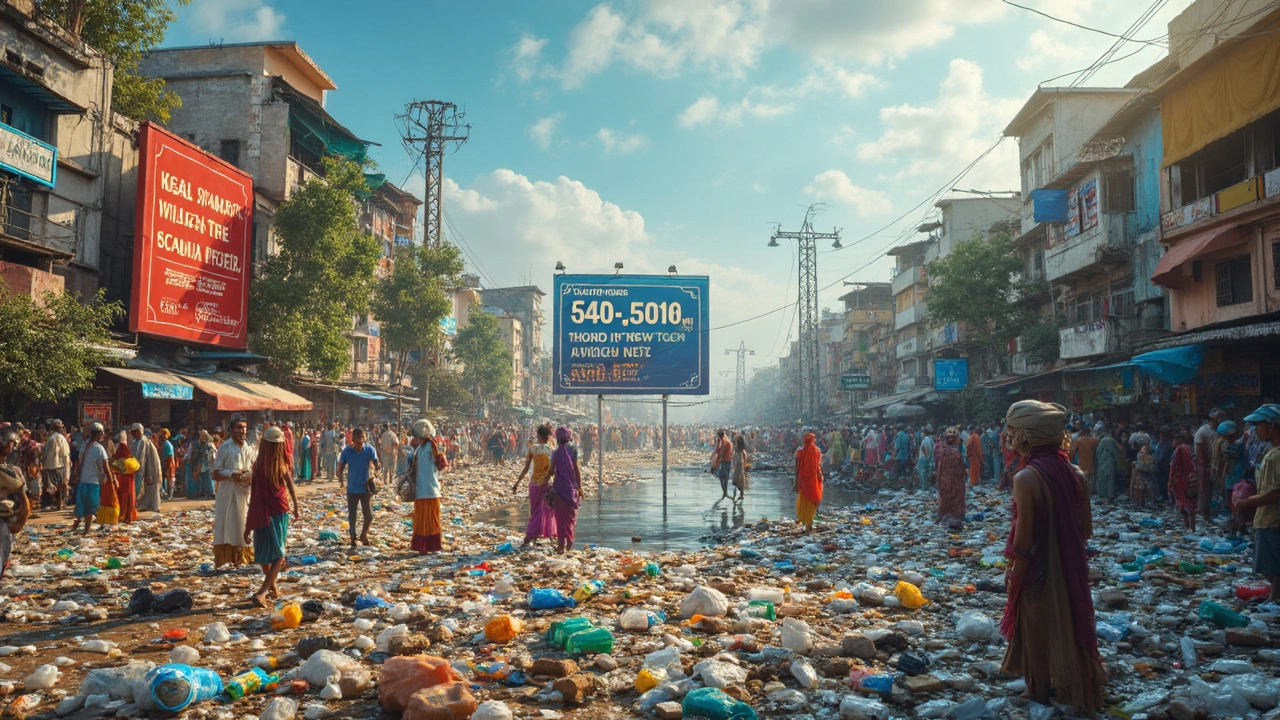When it comes to plastic mess, one name keeps showing up: Coca-Cola. For years, Coca-Cola has led the pack, cranking out billions of single-use plastic bottles every year. Just in 2024, they produced more than 120 billion plastic bottles. That's enough to circle the planet over 600 times if you lined them up. Most of these bottles aren't recycled—they end up tossed in dumps, rivers, and oceans, mixing with trash and turning into microplastics that sneak their way back onto our dinner plates.
Sick of spotting soda bottles washed up on the beach or jammed in city gutters? You're not alone. Studies count Coca-Cola, along with other big players like PepsiCo and Nestlé, as top plastic polluters on every continent, including far-off spots where these brands don't even sell their stuff. Why? Their plastic just travels that far.
- The Biggest Name in Plastic Pollution
- How Their Plastic Spreads Everywhere
- The Hidden Numbers: Brands and Waste Data
- What You Can Actually Do About It
The Biggest Name in Plastic Pollution
If you ever wondered why plastic pollution is such a huge deal, one company pops up again and again: Coca-Cola. These guys aren't just soda kings; they're the world’s largest plastic polluter according to global reports from 2021 through 2024. Open up any brand audit from the Break Free From Plastic movement, and Coca-Cola's name dominates the list of most-littered brands for five years straight.
It’s not just about how much they sell—it’s what those bottles are made from. Almost every Coke bottle is single-use PET plastic and billions are churned out each year. In 2024, Coca-Cola alone put out over 120 billion plastic bottles. That’s about 200,000 bottles every single minute. Most are designed for one quick use, then tossed.
Here’s a glance at how the top polluters ranked worldwide in audited plastic waste in 2024:
| Company | Number of Items Found |
|---|---|
| Coca-Cola | Over 2.5 million |
| PepsiCo | 1.3 million |
| Nestlé | 908,000 |
Why do these names always show up? Their global reach is jaw-dropping. You’ll find Coke bottles in US cities, African deserts, and tiny Pacific beaches. Their distribution networks make sure their products, and their plastics, get everywhere. Even in countries with recycling programs, most bottles still end up as litter or landfill because the global recycling rate for plastics sits below 10%.
Big companies try to shift blame, saying people should recycle more. But the basic truth? When your business keeps pumping out billions of plastic bottles and packets, a lot of that plastic will end up in the wild—especially in places where waste management barely works. As long as the largest manufacturers keep favoring cheap single-use items, the problem isn’t going away on its own.
How Their Plastic Spreads Everywhere
Ever wonder why you spot the same brands almost everywhere, from crowded cities to remote coastlines? It’s not just about how much plastic companies like plastic pollution leaders Coca-Cola produce. It’s about how they design their packaging—single-use, throwaway, hard to recycle—and how we toss it out after a quick drink or snack.
Let’s talk numbers. According to a 2024 Break Free From Plastic audit, Coca-Cola was the most frequently identified brand in over 75 countries, making it the world’s biggest plastic polluter. Their bottles and caps are deliberately lightweight for shipping, but that just makes them more likely to get blown around, end up in rivers, and eventually hit the ocean.
Once there, these items break down real slow—bottles can linger for 450 years or more. And the caps? Often eaten by wildlife, they’re big trouble for animals and the food chain. Here's what typically happens after you finish a drink:
- Most bottles get dumped after a single use.
- Only about 9% of all plastic ever gets recycled.
- The rest heads to landfill, or worse, gets littered and travels with wind and water.
Companies like Coca-Cola flood markets everywhere, even in places with zero recycling infrastructure. In India, for instance, small plastic sachets and bottles are a common sight along riverbanks because there’s just no system to collect and recycle them.
You’ll find these well-known brands popping up not just in city trash, but everywhere people go: in parks, at beaches, on hiking trails. They’ve even been spotted packed into Mount Everest’s snow and on uninhabited islands in the Pacific.
| Location | Top Brand Found | Type of Plastic |
|---|---|---|
| Ganges River, India | Coca-Cola | Bottles |
| Leyte, Philippines | Nestlé | Sachets |
| Great Pacific Garbage Patch | Coca-Cola | Bottles, caps |
The simple truth: if it’s easy to throw away and hard to recycle, you’ll find it everywhere. Until these manufacturing giants change how they make and collect their products, plastic keeps showing up where it shouldn’t be.

The Hidden Numbers: Brands and Waste Data
When you look at plastic pollution and try to pin down who’s really responsible, the numbers don’t lie. According to Break Free From Plastic's 2024 brand audit, Coca-Cola came out as the top global plastic polluter for the sixth year in a row. They didn’t just squeeze by the competition—Coca-Cola’s logo popped up on almost twice as much trash as PepsiCo, the #2 offender. Other names usually found in the top five include Nestlé, Unilever, and Mondelez International.
Here’s a snapshot from the recent audit, which involved over 200,000 pieces of branded plastic trash collected from 87 countries:
| Company | Plastic Waste Counted | Packed Products |
|---|---|---|
| Coca-Cola | 33,820 | Soda bottles, caps, wrappers |
| PepsiCo | 19,770 | Bottles, snack bags |
| Nestlé | 13,852 | Water bottles, candy wrappers |
| Unilever | 10,692 | Shampoo bottles, food pouches |
That’s just the tip of the iceberg. A huge chunk of this plastic manufacturing isn’t tracked, and the real numbers are likely higher when you add in unbranded plastics that can’t be linked to a company. Also, it’s not only about bottles; single-use wrappers and snack packaging make up a big slice of the waste, but these small pieces are usually the hardest to recycle.
Why do these brands keep making so much plastic? It’s cheap, it keeps products safe, and they see it as what customers want. But studies say only about 9% of plastic ever gets recycled worldwide. The rest clogs streets, floats in rivers, and sits in landfills for centuries. The problem grows every year, and so do these companies’ plastic footprints.
What You Can Actually Do About It
Tired of hearing about plastic pollution and giant companies like Coca-Cola leading the mess? Nobody can solve it alone, but your choices add up faster than you’d think.
First, ditch single-use bottles when you can. Grab a reusable water bottle—steel or sturdy plastic lasts ages and saves you money. Got a favorite soda? Buy bigger bottles to reduce plastic waste, or better yet, find local brands that use refillable glass.
If you’re stuck with plastic packaging, recycle it right. The reality: only 9% of plastic ever actually gets recycled—most ends up in landfills or the ocean. Clean and dry your plastics before tossing them in the bin, because dirty stuff gets rejected and thrown out.
- Support brands moving away from single-use plastics. Some snack companies and drink brands are switching to compostable or paper packaging. Give them your business when you notice the change.
- Get in on community cleanups. Local groups and even schools run weekend trash collections, and plastics from top polluter brands show up everywhere. Every bottle you spot is one less in the ocean.
- Speak up. It sounds simple, but companies obsess over what you say online. Drop a message on their social feeds or tag them with a picture of their trash. The hashtag #BreakFreeFromPlastic gets noticed.
Want to see how just a few countries stack up with plastic manufacturing giants? Check this out:
| Country | Annual Coca-Cola Plastic Bottles Used (Billion) |
|---|---|
| USA | 28 |
| Mexico | 12 |
| UK | 9 |
Last thing—vote with your wallet. Cutting back just one bottle a week saves 52 bottles a year. Imagine millions of people doing the same. It's not about being perfect. It's about tipping the numbers in our favor, one less bottle at a time.
